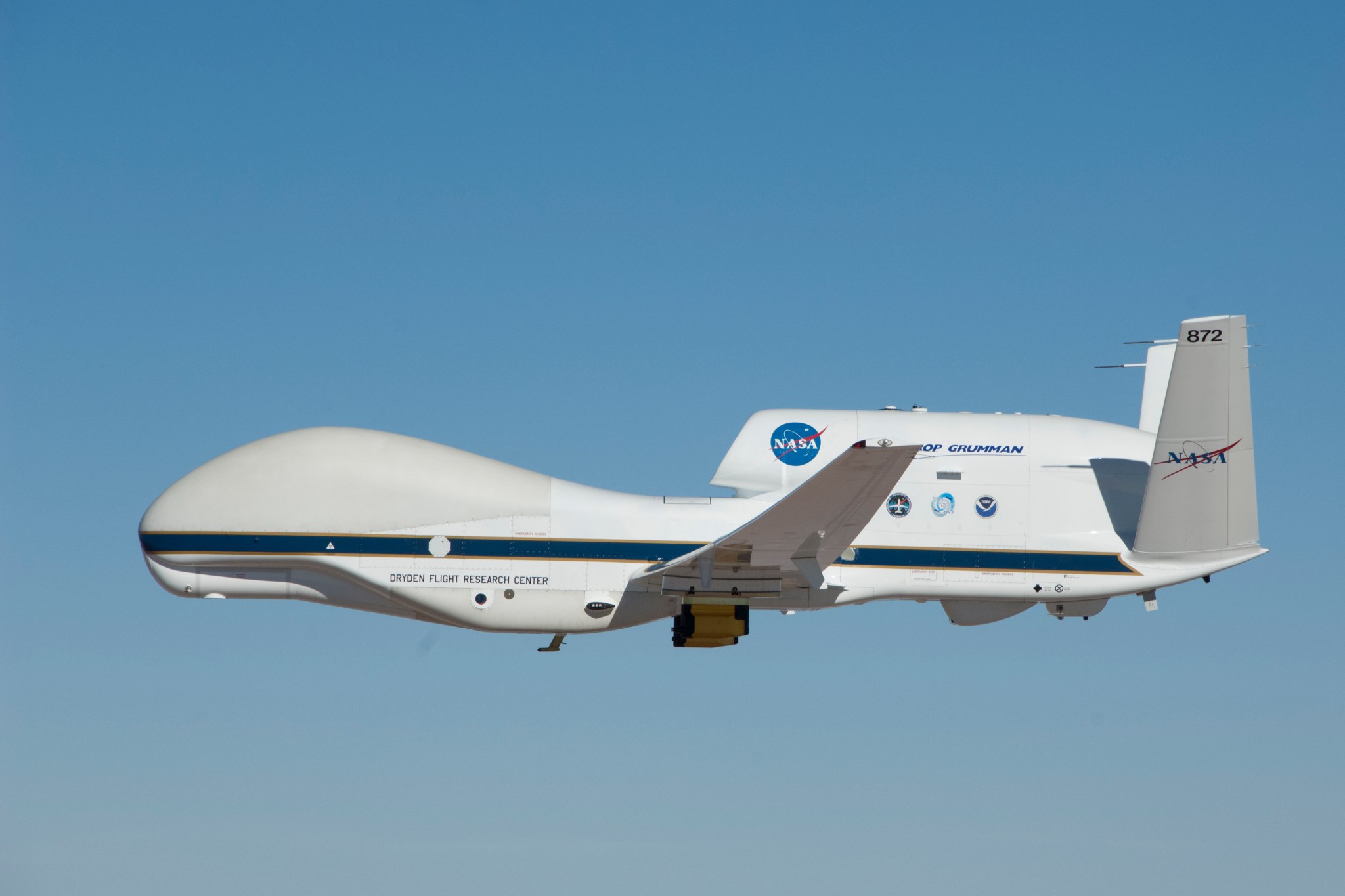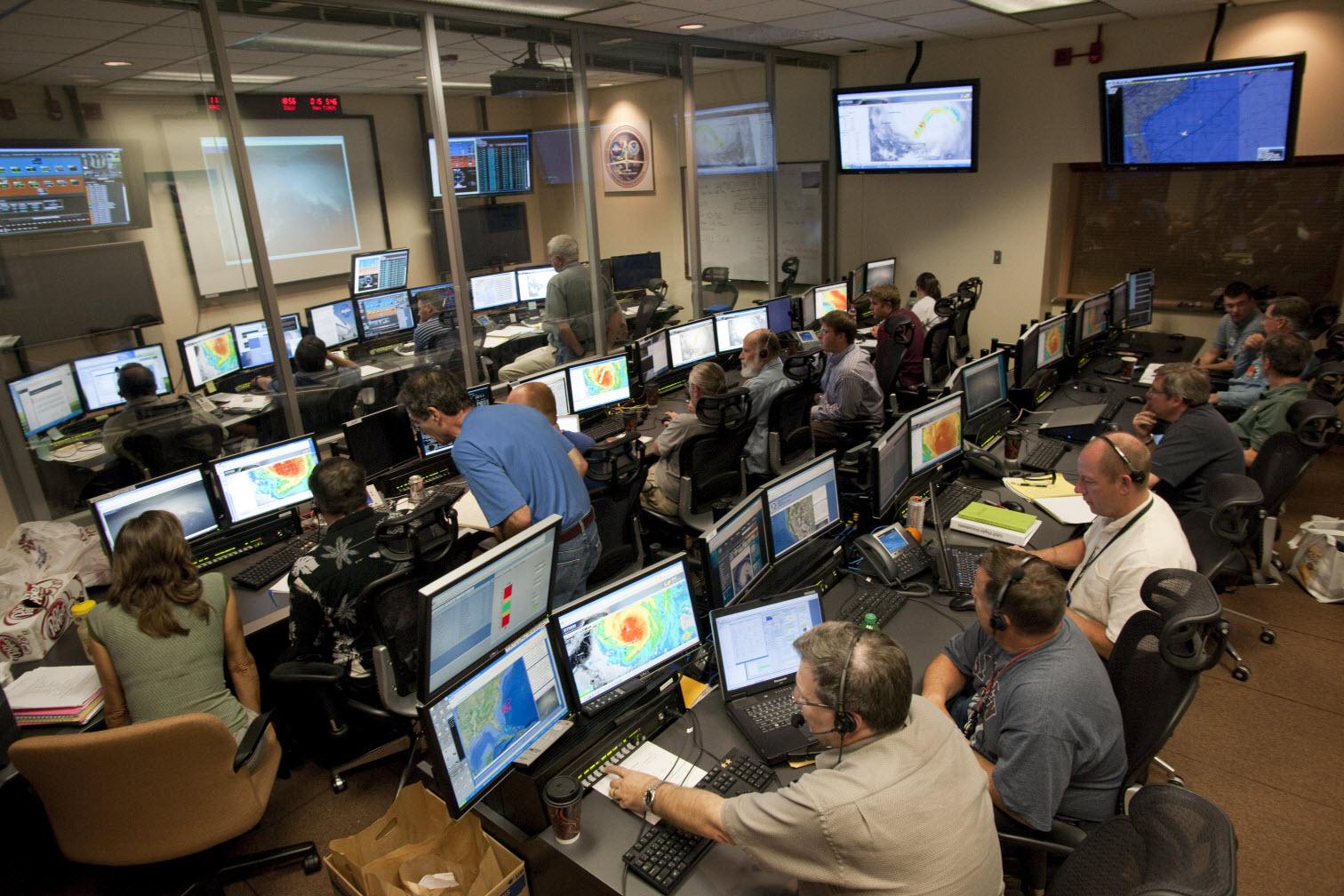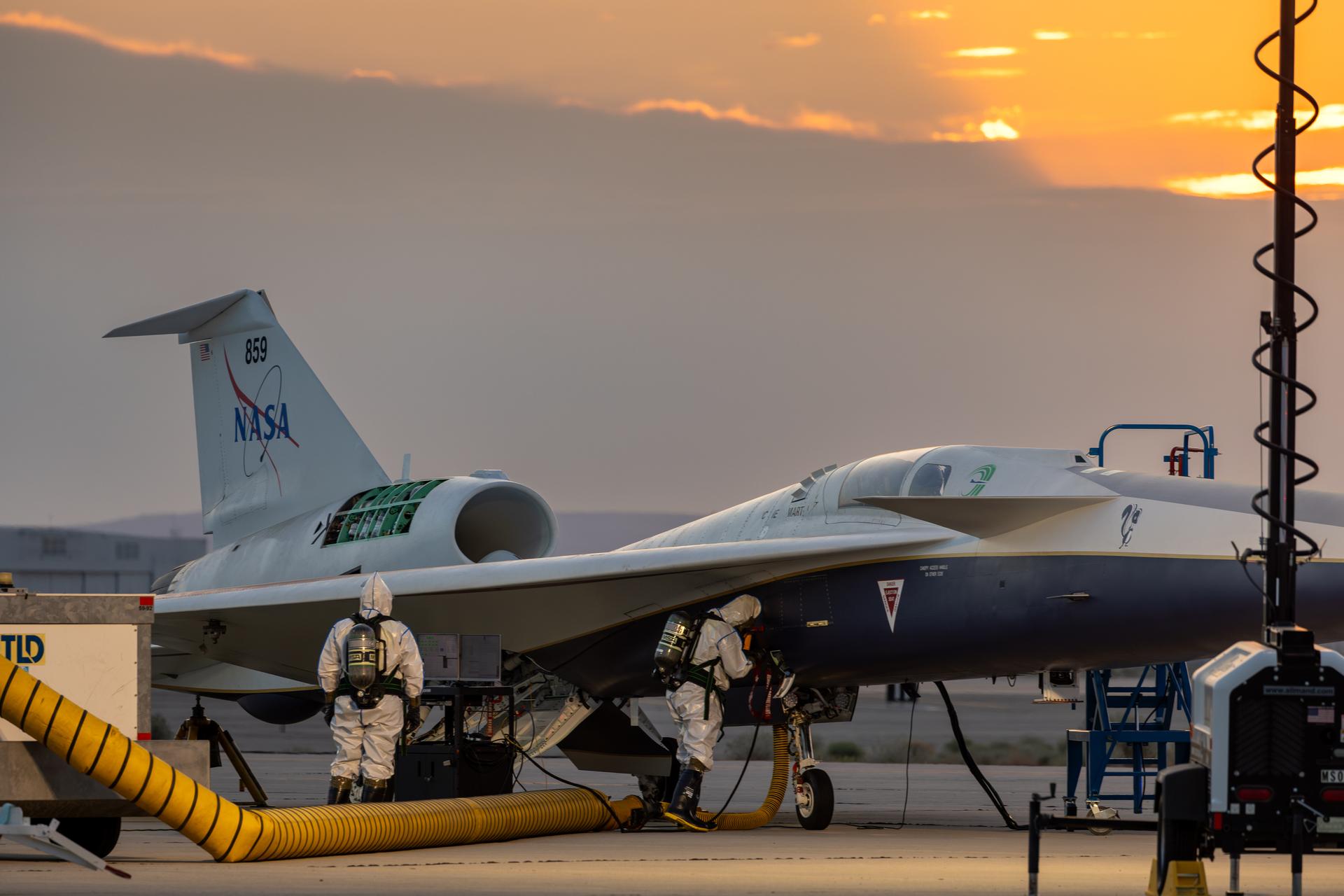NASA’s Armstrong Flight Research Center in Edwards, California, operates two Northrop Grumman Global Hawk unmanned aircraft for high-altitude, long-duration missions. Acquired from the U.S. Air Force, these two aircraft consist of a Block 2 Advanced Concept Technology Demonstration model and a Block 10 initial production model. A third Block 10 Global Hawk is being refurbished to be operational.
Northrop Grumman Systems Corporation Aerospace Systems Sector in Rancho Bernardo, California, and NASA Armstrong partnered to operate Global Hawk. NASA and Northrop Grumman gain benefit in supporting each other’s use of the Global Hawk system, which includes ground control stations, maintenance facilities, and the NASA Global Hawk aircraft.
The Global Hawk aircraft operate autonomously and execute a flight plan loaded to the aircraft prior to flight. Another unique feature of the aircraft is its endurance and range capabilities. Nominally these aircraft are flown on missions of up to 24 hours, during which they travel approximately 8,500 nautical miles. Although autonomous, the aircraft’s flight is managed and systems are monitored through satellite and line-of-site communication links using a ground control station. Dedicated satellite communication links provide customers with direct access to their onboard sensor packages during missions. Customers have the ability to monitor sensor function and evaluate selected data in near real-time from the ground control station or from their home station.
The 44-foot-long Global Hawk airframe has a wingspan of more than 116 feet, a height of 15 feet, and a gross takeoff weight of 26,750 pounds including a 1,500-pound payload capability. A single Rolls-Royce AE3007H turbofan engine powers the aircraft. The distinctive V-tail, engine cover, aft fuselage and wings are constructed primarily of graphite composite materials. The center fuselage is constructed of conventional aluminum, while various fairings and radomes feature fiberglass composite construction.
Between 2010 and 2017 the aircraft served NASA’s Science Mission Directorate, the National Oceanic and Atmospheric Administration (NOAA), and the Department of Energy in performing Earth observation research. The Global Hawk aircraft proved itself to be a valuable asset for high altitude hurricane and severe storm research performed over the Atlantic and Pacific oceans.
Some examples of the science work Global Hawk has accomplished are:
- Airborne Tropical TRopopause EXperiment (ATTREX) to study moisture and chemical composition in the region of the upper atmosphere where pollutants and other gases enter the stratosphere and potentially influence our climate. Flights were performed from 2011-2014.
- Sensing Hazards Operational Unmanned Technology (SHOUT) Program where NASA partnered with NOAA in 2015 to investigate the use of a High Altitude Long Endurance (HALE) aircraft in sensing high impact weather-related hazards. NOAA discovered that entering the atmospheric data gathered from cruise altitude, ~60,000 feet, to the ocean floor into their forecast models greatly enhanced storm track and storm intensity predictions.
- Hands-On Project Experience (HOPE) Eastern Pacific Origins and Characteristics of Hurricanes (EPOCH) 2016 field campaign that studied storms in the Northern Hemisphere to learn more about how storms intensify as they developed out over the ocean. Data from these flights is still being used in various studies.
Between 2010 and 2017 the aircraft served NASA’s Science Mission Directorate, the National Oceanic and Atmospheric Administration (NOAA), and the Department of Energy in performing Earth observation research. The Global Hawk aircraft proved itself to be a valuable asset for high altitude hurricane and severe storm research performed over the Atlantic and Pacific oceans.
The NASA Global Hawk fleet is currently managed under the agency’s Aeronautics Research Mission Directorate and currently provides support to the Department of Defense in the development of Test Range sensors, which are envisioned to provide both NASA and DoD with cost effective tools to support future systems test operations.
Aircraft Specifications
Dimensions:
- Length: 44.4 feet (13.5 meters)
- Wingspan: 116.2 feet (35.4 meters)
- Height: 15.2 ft (4.6 meters)
Air Vehicle Characteristics:
- True airspeed @ 55,000+ feet altitude: 335 knots true airspeed (KTAS) (never-exceed speed [VNE] = 355 KTAS)
- Turn radius @ 55,000+ feet altitude: 6.5 nautical miles
- Altitude: 65,000 feet (maximum)
- Payload: >1,500 pounds
- Range/duration: 11,000+ nautical miles / 31+ hours (maximum)
- Engine thrust: >Flat rated at 7,500 lb thrust at sea level
- Take-off fuel: 14,500 lb (15,436 lb max fuel tank capacity)
- Take-off gross weight (max): 25,600 lb
- DC (engine-driven generator): 28 VDC, 186.3 A (5.2 KW) AC (hydraulic-powered generator): 115 VAC, 3-phase 400 Hz, 71.8 A/phase (8.3 KVA)
- Engine: Allison AE-3007H turbofan



































